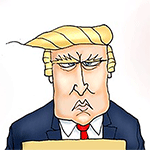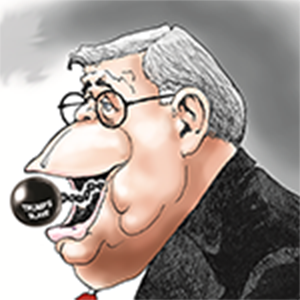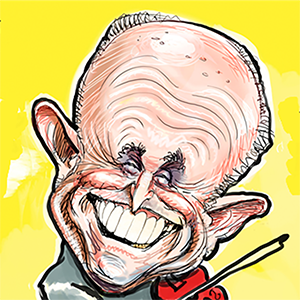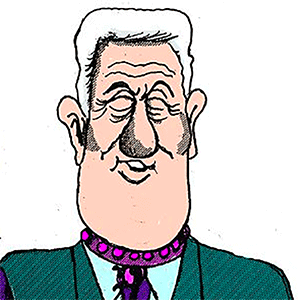Editorial: Trump's delight in disruption threatens the economy
Published in Op Eds
Just how far President-elect Donald Trump will press his promises on trade and economic policy once he takes office is hard to say. One thing is already apparent: The harms won’t be limited to the direct consequences of his actual policies. Even if his commitments in the end amount to little, they’re already burdening companies, unsettling financial markets and confounding prudent monetary policy.
At best, that means slower growth. At worst, it could scare investors enough to tip the economy into a severe contraction.
Responding to Trump’s threats of new trade barriers, firms have started to move supply chains away from China and other possible targets — frontloading orders, expanding inventories, seeking new suppliers and renegotiating existing contracts. This diverts managers’ attention from boosting efficiency and raises consumer costs, which is bad enough.
But financial instability is the bigger risk. After a news report that Trump’s advisers wanted to confine new tariffs to strategically significant imports, the dollar broadly subsided; when Trump denied the story, it rallied. (Such whiplash illustrates, by the way, the tendency of currency movements to cancel out the effects of tariffs on the trade balance.) Mere speculation about what the new administration might do pushed exchange rates and other prices pointlessly to and fro, shifted the composition of trade flows, and created yet more uncertainty.
It’s no coincidence that 20-year U.S. Treasury bond yields rose above 5% last week. In part this reflects growing anxiety about Trump’s agenda, including the prospect of much higher public borrowing (even allowing for tariff revenue) and persistent inflation owing to deficit-fueled domestic demand and rising import prices. If the government’s benchmark cost of borrowing were to settle at that level or higher, the fiscal consequences could be grave. Stabilizing, much less reducing, government debt — now roughly 100% of gross domestic product and rising — would be much harder. As financial markets turn their attention to this arithmetic, long-term rates might rise higher still.
Amid this compounding uncertainty, the Federal Reserve is tasked with getting inflation down to 2% without tanking the economy. Last month it cut its policy rate by a quarter-point but cautioned that further reductions might have to wait. Thanks to the reigning confusion over trade and fiscal policy, it’s impossible to say how long that wait might be.
Fed officials are already struggling with the muddle created by Trump’s assorted promises, as the minutes from its last meeting show. Some said they’d incorporated “placeholder assumptions” for the effects of the new administration’s tariff and immigration policies on inflation, a notable departure from their approach in December 2016, when they chose to wait and see what Trump’s first term might bring. The need for guesswork on such matters, given the expansive range of possibilities, is worrisome. Possible threats to the Fed’s independence (on which the minutes are judiciously opaque) don’t help. Understanding the central bank’s outlook is essential for borrowers and creditors, but the Fed can’t be clear about its intentions if Trump might hike tariffs far and wide, cause the budget deficit to soar, or try to take charge of monetary policy.
As ever, Trump’s top priority seems to be amusing himself and stirring up controversy. But promising to disrupt economic policy is riskier than he thinks. If he keeps this up, a crisis of confidence is a real possibility.
____
The Editorial Board publishes the views of the editors across a range of national and global affairs.
©2025 Bloomberg L.P. Visit bloomberg.com/opinion. Distributed by Tribune Content Agency, LLC.




























































Comments